Later Mughals- Decline of Mughal Empire (Complete History Notes for UPSC Exams)
Later Mughals & Decline of Mughal Empire
The Later Mughals period represents crucial phase in India history, marking the gradual decline of Mughal Empire. Spanning from the late 17th to the mid-19th centuries, this period witnessed internal conflicts, external threats, and political instability, contributing to the Decline of Mughal Empire. From Aurangzeb’s reign to Bahadur Shah II’s rule, this time was characterized by power struggles and social changes, reflecting the empire’s weakening grip on authority. Lets star with Later Mughal rulers:
Later Mughals
Below is the full list of Later Mughal Rulers and important Facts related to them:
| Bahadur Shah I
(Muazzam/Shah Alam I) (1709-1712) |
|
| Jahandar Shah (1712-1713) |
|
| Farrukh Siyar (1713-1719) |
|
| Muhammad Shah
(1719-48) |
|
| Ahmad Shah (1748-54) |
|
| Alamgir II (1754-1759 A.D.) |
|
| Shah Alam II (1759-1806) |
|
| Akbar Shah II (1806-1837) |
|
| Bahadur Shah II (1837-1857) |
|
Decline of Mughal Empire
Let’s understand The decline of Mughal Empire.
- After the demise of Aurangzeb in 1707, we see a drastic decline in the power and prestige of the Mughal Empire.
- The political boundaries of the Empire shrank, and the administrative structure built by rulers like Akbar and Shah Jahan also collapsed.
- Aftermath the collapse of the Mughal power, several independent principalities emerged in all parts of the Mughal Empire.
Causes of Decline of Mughal Empire
1. Weak successors
- The Mughals, like their ancestors, did not follow any particular succession law like the law of primogeniture.
- The war of succession after Aurangzeb weakened the Mughal Empire.
- The successors of Aurangzeb were weak. They became victims of the conspiracies of the nobles, who were divided into different factions.
- The absence of a powerful ruler in Later Mughals, an efficient bureaucracy and a capable army weakened the Empire.
2. Aurangzeb’s religious policy
- Aurangzeb rolled back the tolerant religious policy adopted by Akbar.
- He reimposed jizya, destroyed many Hindu temples and levied duty on Hindu merchants.
- His policies alienated the Rajputs. The Sikhs and the Bundelas were also agitated.
- The constant war and conflict with the Sikhs, the Marathas and the Rajputs drained the coffers of the Mughal Empire.
3. Aurangzeb’s Deccan Policy
- His Deccan policy significantly weakened the power and prestige of the Mughal Empire.
- His destruction of the Shia kingdoms of the Bijapur and Golconda led to The Mughals coming into direct conflict with Marathas.
- Aurangzeb’s long absence from Northern India caused many provincial governors to declare independence.
4. The Jagirdari Crisis
- Akbar introduced the mansabdari system in civil and military organisations. They were paid either in cash or awarded a jagir or landed State.
- The jagirdars were required to collect revenue from the particular jagir. Of this, one part would go to the State, and the other two would cover his personal expenses and the maintenance allowances for his soldiers and horses.
- During the later part of Aurangzeb’s reign, the number of jagirdars appointed had risen so significantly that there was a shortage of Paibaqi land (land allotted to jagirdars). As a result, the nobles competed for better jagirs.
- The depleting resources of the Empire led to a rupture in the functional relationship between the Emperor and the aristocracy, indicating the beginning of inefficiency within the imperial Mughal administrative system.
5. Foreign invasions
- The foreign invasions further weakened the Mughals and hastened the process of disintegration.
- The foray of Nadir Shah and Ahmad Shah Abdali severely drained the Mughal exchequer.
6. Agrarian Crisis
- The attempt by Aurangzeb to solve the acute shortage of jagirs by showing enhanced income from Jagirs on record backfired.
- The Amirs tried to recover their jagirs’ recorded incomes by pressuring the peasantry.
- There was also the rotation of Jagirs.
- The peasant discontent led to their flight from jagirs and ultimately evolved into agrarian revolts.
7. Ineffective Mughal force
- A Duh Aspah(a trooper with two horses) – Sih Aspah(a trooper with three horses) system was introduced by Jahangir, which made Mughal cavalry highly mobile and effective. But this system was diluted later, during Aurangzeb’s reign, which made the movement slow. With time the Mughal army lost its glory. They lost their confidence after losing many decisive campaigns.
- The Mughals failed to understand the importance of naval power, which cost them dearly.
8. The emergence of the British and other European powers
- The emergence of the Western powers was the last nail in the coffin of any hope of anointment of the Mughal empire, as they were much more militarily superior and politically informed of India’s situation. so they took the advantages adequately.
Rise of Regional Powers after the Decline of Mughal Empire

Powers of India in the 18th century
- Since the death of Aurangzeb in 1707, there has been a decline of Mughal Empire, especially the central power in Delhi.
- This was followed by the emergence of successor states which represented the subas of the Mughal Empire.
These new state formations can be divided into three broad categories:
- Successor states (Awadh, Bengal and Hyderabad): These provinces broke away from the Mughal Empire. Though they did not challenge the sovereignty of the Mughal ruler but established virtually independent and hereditary authority. They had some standard features:
- They were suspicious of the administrative system they inherited from the Mughals.
- Instead of officers, they relied on revenue farmers (Ijarahdars) for tax collection.
- The relationship between states and moneylenders, and merchants became evident.
- Watan jagirs (Rajputs): They served as vassals of the Mughals and were awarded Watan jagirs, which they could rule independently.
- The new states: These states were formed due to rebellion against the Mughal Empire by the Marathas, the Sikhs and the Jat states.
1. Hyderabad
- Nizam-ul-Mulk Asaf Jah (Kilich Khan) was the founder of the Independent State of Hyderabad.
- He was first appointed as the governor of Awadh and, later, of Deccan by Farrukhsiyar.
- In 1724, he defeated Mubariz Khan, the Mughal viceroy of Deccan, and established the Hyderabad state.
- He appointed mansabdars and granted jagirs; the Mughal Emperor merely confirmed his decisions.
- The new State was in continuous conflict with the Marathas and the Telugu Nayakas.
2. Awadh
- Saadat Khan, popularly known as Burhan-ul-Mulk, founded the independent principality of Awadh.
- He was a Shia.
- He was appointed Subadar of Awadh in 1722.
- He tried to control the region by reducing the number of jagirdars. He also reduced Jagir’s size and appointed his loyal servants to vacant positions.
- He controlled the rich alluvial planes and the trade route between north India and Bengal.
- He held the offices of Subedar, Diwan and Fauzdar.
- The State depended on Mahajans or local bankers for loans and sold rights to collect taxes to the highest bidder (Ijaradar).
- These developments allowed new social groups like bankers and moneylenders to influence the management of the State’s revenue system.
3. Bengal
- Murshid Quli Khan founded the independent State of Bengal.
- He was employed as the naib, deputy to the province’s governor.
- He transferred all jagirs to Orrisa to reduce the Mughal influence.
- He adopted a harsh attitude in collecting revenue from Zamindars.
- During his reign, Hindu Zamindars and bankers emerged as a new privileged class.
4. The Marathas
- It was another powerful kingdom that arose from sustained opposition to the Mughals.
- In the leadership of Shivaji (1627-1680), the Marathas could successfully carve out a stable kingdom with the support of powerful warrior families (Deshmukh).
- After Shivaji died in 1680, the Chitpavan Brahmanas held effective power in the kingdom and served Shivaji’s successors as Peshwa (prime minister).
- Poona was made the capital of the kingdom.
- The Peshwas developed a powerful military organisation.
- The Maratha Empire flourished between 1720 and 1761.
- They established their rule in Malwa and Gujarat by uprooting the Mughal authority.
- By the 1730s, their authority was recognised over the entire Deccan region.
- They possessed the right to levy Chauth and Sarsdeshmukhi in the entire region.
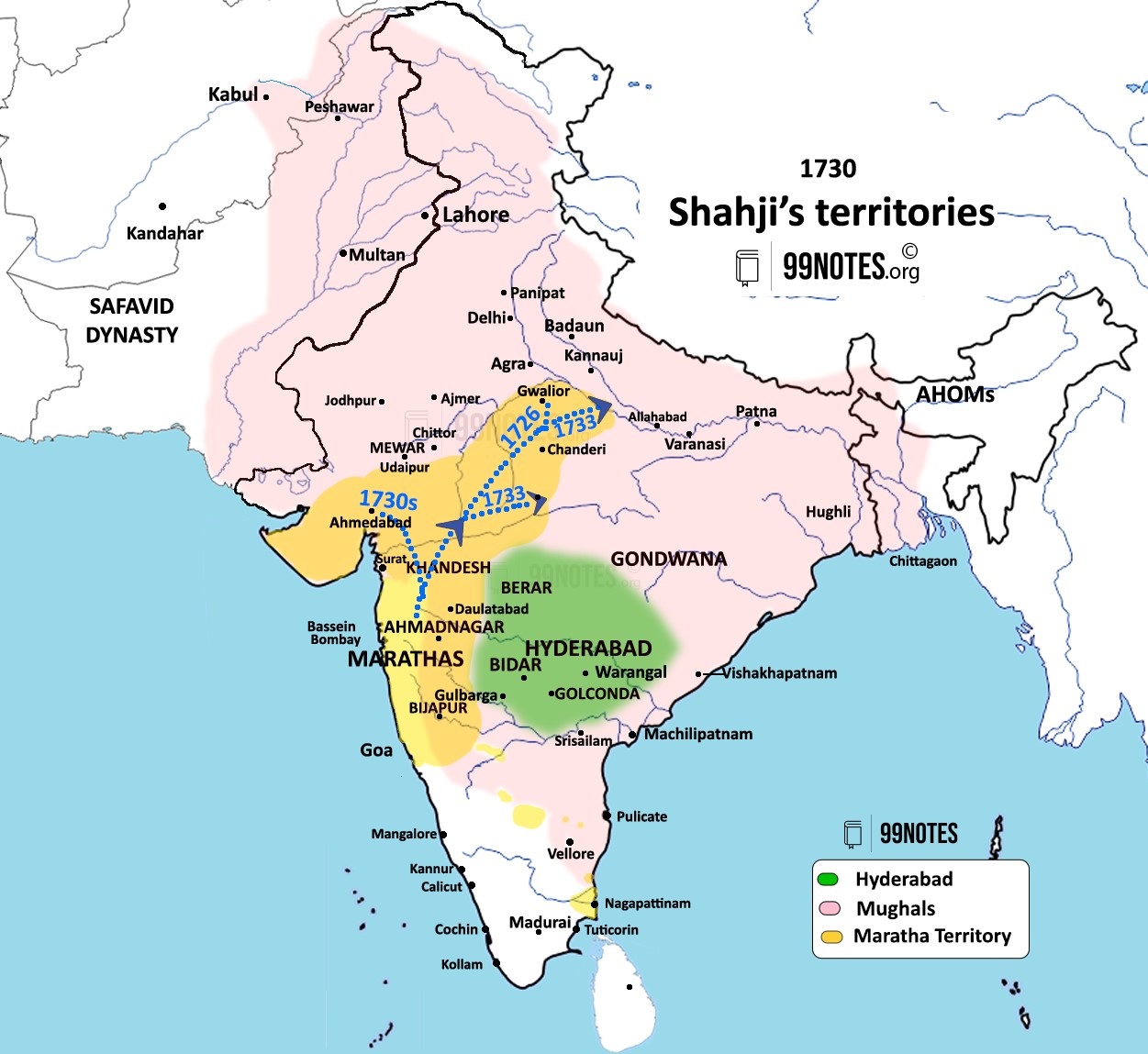
- In 1737 after the Maratha raid of Delhi, the boundaries of Maratha domination expanded rapidly into Rajasthan and Punjab in the north, Bengal and Orissa in the east, Karnataka, and the Tamil and Telugu regions in the south.
- However, they were not formally comprised of the Maratha empire but used to pay tribute as a way of accepting Maratha sovereignty.
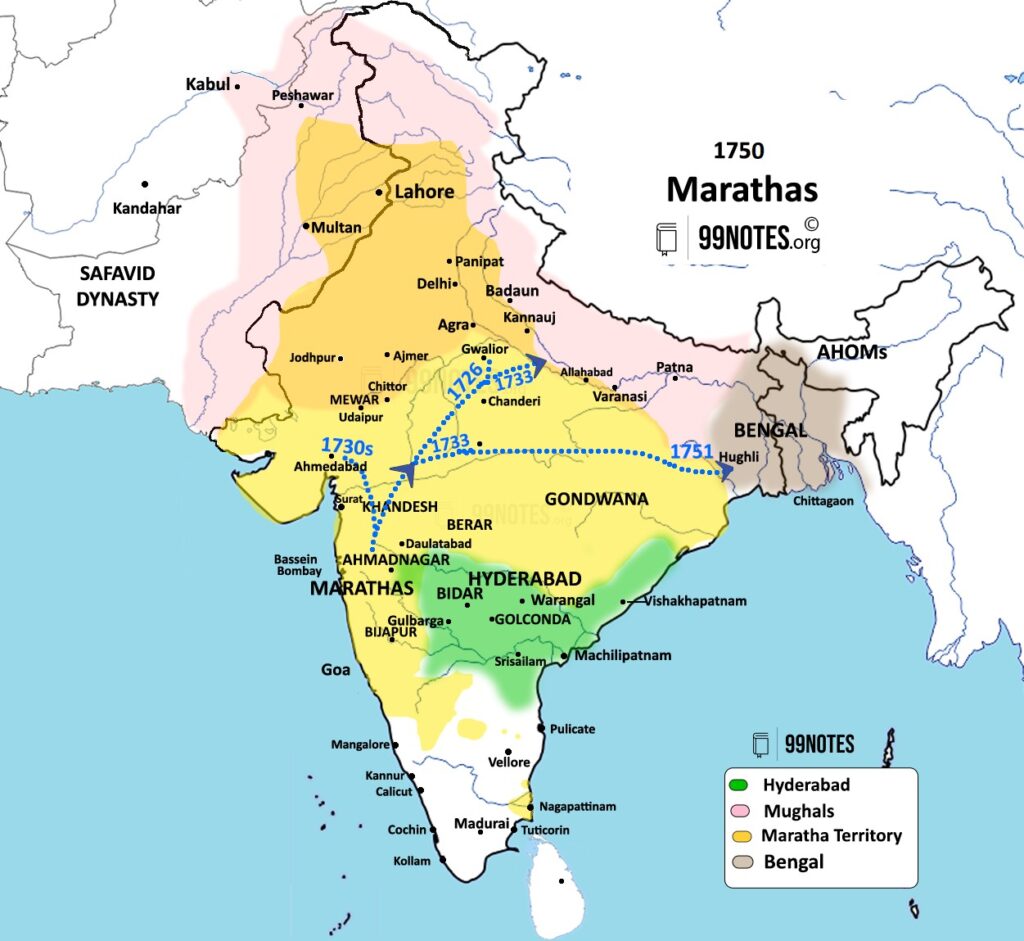
- They also developed an effective administrative system.
- Ahmad Shah Abdali challenged the Maratha authority in the third battle of Panipat(1761).
- However, they recovered quickly after the defeat and offered credible resistance to the East India Company.
5. The Rajputs
- The Rajput states, particularly Jodhpur and Amber, enjoyed considerable autonomy in their Watan Jagirs under the Mughals.
- In the eighteenth century, they now attempted to extend their control over adjacent regions.
- They also tried to enlarge their territories by seizing imperial territories near Watan Jagir.
- The ruler of Jodhpur was Ajit Singh. He was involved in factional politics in the Mughal court.
- Raja Jai Singh established his capital at Jaipur. The Subadari of Agra was also given to him in 1722.
- However, the Maratha campaigns from the 1740s checked their further expansion.
6. The Sikhs-
- During the 17th century, the Sikhs organised themselves under a political community.
- Guru Govind Singh fought several battles against the Mughals and the Rajput rulers.
- After he died in 1708, the Khalsa revolted against the Mughal authority under Banda Bahadur’s

Banda Bahadur
https://en.wikipedia.org/wiki/Banda_Singh_Bahadur#/media/File:Banda_Bahadur_the_Sikh_Warrior_,.JPG
They proclaimed their sovereign commandment by issuing coins in the name of Guru Nanak Ji and Guru Gobind Singhji. Their administration was also set up between the Sutlej and the Yamuna.
- Farrukhsiyar executed Banda Bahadur in 1716.
- In the 18th century, they organised themselves into several Jathas and later Misls. This combined group of Misl (12) was known as Dal Khalsa.
- Dal Khalsa used to meet at Amritsar on the occasion of Baisakhi and Diwali and used to take the collective resolution of Gurus, known as ‘Gurumathas’.
- They introduced the Rakhi system to safeguard the farmers on the payment of a tax of 20% of the produce.
- They put up a successful resistance to the Mughal governors and Ahmad Shah Abdali.
- The Khalsa proclaimed their sovereign rule by striking coins in 1765.
- Their territories extended from the Indus River to the Yamuna River and were divided between different rulers.
- Finally, Maharaja Ranjit Singh reunited these groups and established his capital at Lahore in 1799.
7.The Jats
- The Jats were agriculturalist settlers living around Delhi, Mathura and Agra who revolted against the oppressive policies of Aurangzeb.
- They consolidated their power in the late seventeenth and eighteenth centuries.
- Under Churaman, they acquired control over territories west of Delhi, and by the 1680s, they began dominating the areas between Delhi and Agra.
- During Surajmal’s leadership, the Jat power reached its peak.
- They were prosperous agriculturists.
- The towns like Ballabhgarh and Panipat were essential trading centres under them.
8. The Afghans
Rohillakhand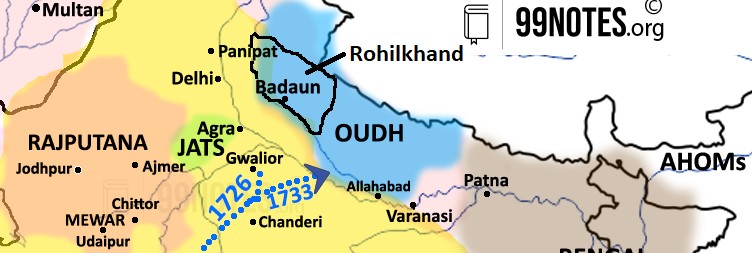
- They migrated to India in the 18th Century from Afghanistan, which went through political and economic turmoil.
- Ali Mohammad Khan took advantage of the political situation that emerged after the invasion of Nadir Shah and set up a small kingdom called Rohillakhand, the area between Kumaon in the north and Ganga in the south.
- They were engaged in continuous conflict with the Jats and the Awadh Later, they suffered heavily at the hands of the Marathas and the British.
9. Independent State of Farrukhabad
- Mohammad Khan Bangash set up an independent kingdom around Farrukhabad(UP) during the reign of Farrukhsiyar and Muhammad Shah; he belongs to the PashtunBangash
- Earlier, he rewarded the jagirof the Farrukhabad area and part of Bundelkhand.
- The State of Farrukhabad was named after the Mughal Emperor Farrukhsiyar to recognise his patronage.
- He was succeeded by his eldest son Qaim Khan in 1743.
Revenue System in Later Mughals
1. Izaredari System
- Jahandar Shah introduced it in 1712-1713.
- However, its practice spread throughout India in the Eighteenth Century, especially in the old Mughal province of Hyderabad, Bengal and Awadh.
- In 1773, Warren Hastings introduced the Ijaredari system in Bengal.
- Also known as revenue farming, under this system, the right to collect revenue from a particular area was auctioned to the highest bidder.
- In some regions like Awadh, the local bankers guaranteed the payment of this contracted amount to the State.
- Nevertheless, the revenue farmers were given considerable freedom in the assessment and collection of taxes, which caused the exploitation of the peasants.
How was it different from Zamindari?
- Prevalence
-
- Zamindari System was Prevalent during the rule of Sher Shah Suri and Akbar.
- Whereas the Ijaradar System ( Revenue Farming )was started during Delhi Sultanate. It was again revived by Jahangir and became widespread during the 17th Finally, it was reintroduced during Jahandar Shah’s rule.
- Arrangement
- Zamindars had a hereditary right to take a share of the produce from the land they commanded. However, They did not own the land.
- On the other hand, Ijaradar System was not hereditary. It used to be Selected by bidding. So they had no proprietary right to land.
- Revenue Assessment
- In Zamindari System, the revenue assessment was based on the Dashala system(yield of the last 10 years was calculated).
- Ijaradar System was based on competitive bidding, and the revenue demand from the State was artificially inflated. Therefore, it had little relationship with the actual agricultural production levels.
- Revenue Collection
-
- In Zamindari System, the revenue collection was mainly done in cash or kind, whereas Ijaradar System was primarily in cash.
- Condition of the revenue collectors
-
- Zamindars belonged to the village. They shared good relations with the peasants.
- On the other hand, Ijaradar System gave rise to a class of bankers, generally from the cities, who invested their money in revenue farming. They proved to be a constant source of danger to the interest of the zamindars.
- Condition of the peasants
-
- Zamindars did not charge over the tax rate. Reasonable demands of the State from the peasants.
- The provision of remission was there in case of crop failure.
- The Peasants were the proprietor of the land.
- Zamindars were revenue collectors, not the proprietor of the land.
- The State was protective of the farmers.
- In the Ijaradari system, the Revenue farmers can levy beyond the fixed tax.
- The amount demanded from the peasants was artificially inflated due to the competitive bidding process.
- No remission provision was there in case of crop failure.
- The peasant was reduced to a mere tenant.
- The State was immensely harsh on the farmers.
- Zamindars did not charge over the tax rate. Reasonable demands of the State from the peasants.
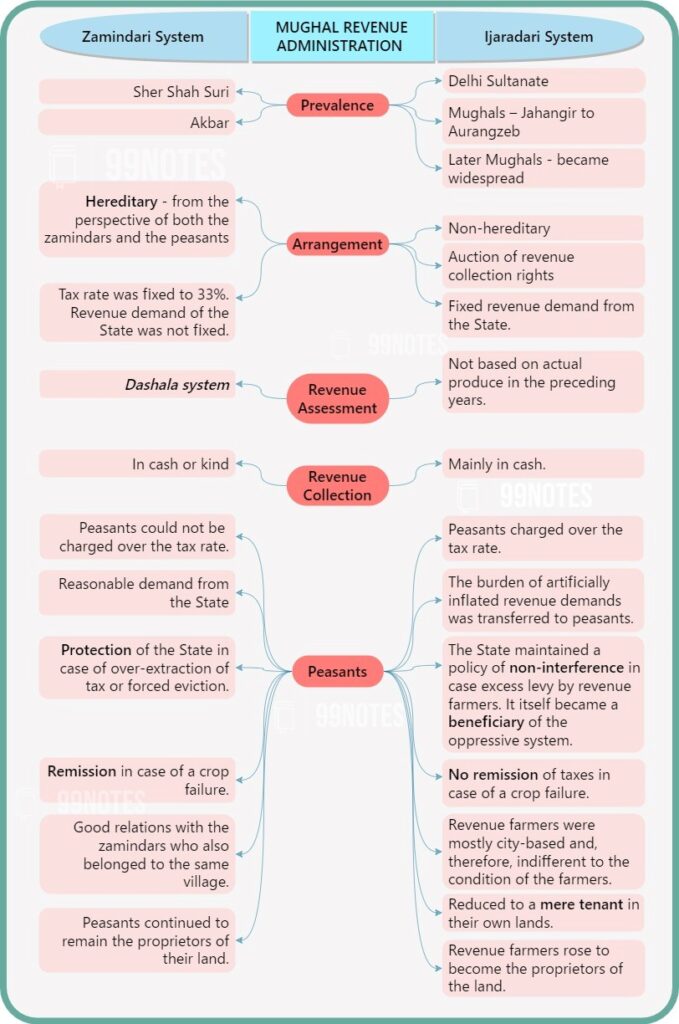
Conclusion
The Later Mughals era stands as the era of Decline of Mughal Empire. Through internal conflicts, external pressures, and shifting socio-political dynamics, the decline of Mughal Empire unfolded gradually. From the reign of Bahadur Shah I (1707) to the last Emperor Bahadur Shah II (1862), the Mughal Empire has seen its Decline simultaneously the emergence of regional powers like Marathas, Sikhs, and Rajput’s further fragmented Mughal authority, shaping the political landscape of 18th-century India.




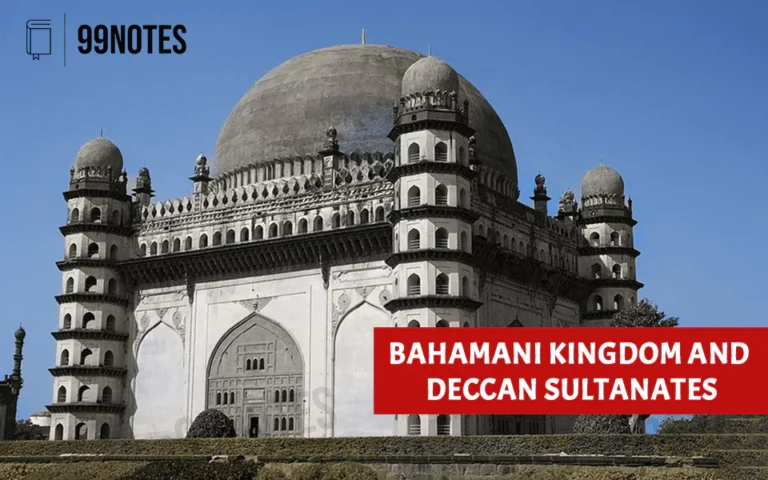
![Tripartite Struggle (790-1162Ad) History, Cause &Amp; Consequences [Upsc Notes] | Updated July 26, 2024 Tripartite Struggle (790-1162Ad) History, Cause & Consequences [Upsc Notes]](https://99notes.in/wp-content/uploads/2022/12/tripartite-struggle-featured-768x500.webp)

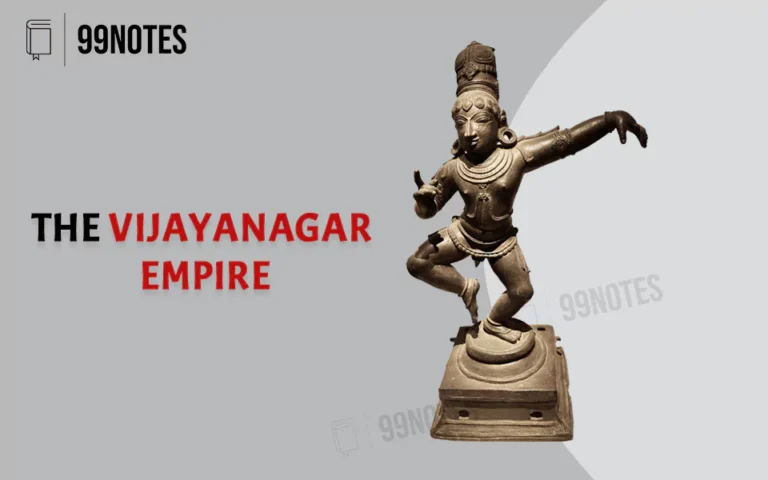
![Bhakti Movement: Origin, Main Principles, Causes, And Its Effect [Upsc Medieval History Notes] | Updated July 26, 2024 Bhakti Movement: Origin, Main Principles, Causes, And Its Effect [Upsc Medieval History Notes]](https://99notes.in/wp-content/uploads/2023/02/the-bhakti-momvement-banner-99notes-upsc-768x480.webp)
